This is part 2 of my latest essay, which is about a visit to the region of Tomar and Dornes in Central Portugal. Part 1 can be found here:
The History of Tomar is a very old one, dating back to pre – Roman times. The city was conquered by the Moors in 716, until re-conquered by King Afonso Henriques in 1147. Such was accomplished with the help of the Knights of the Order of the Temple. As a reward, King Afonso granted the ruling of the region to Gualdim Pais, a Templar knight. It was Gualdim Pais that in 1160 started the building of the famous Convent of Christ, which combines a religious structure with a fortification. It was the role of the Templars to defend the region from the attacks of the Moors coming from the South. With time, the Order grew in stature, and Tomar was chosen as its headquarters.
From Dornes to Tomar is a short drive. Upon approaching the city, it is possible to see the convent on the top of the hill, appreciating its defensive position. It is an important monument, classified as a World Heritage site. Its construction spanned many years, between the centuries XII and XVIII. The complex includes various structures, all of significant historical and heritage importance. The core of the whole complex is the Charola Templaria, a rare example of a circular temple, that was used by the Knights as a praying location, or inner sanctum. It is quite impressive to enter the Charola and admire all the works of art and the symbology that fills the place. The central part of the temple is organized according to an octagonal plan, surrounded by a corridor that has 16 faces. Walking around the room, it is possible to admire the many paintings and sculptures that depict episodes from the life of Jesus.
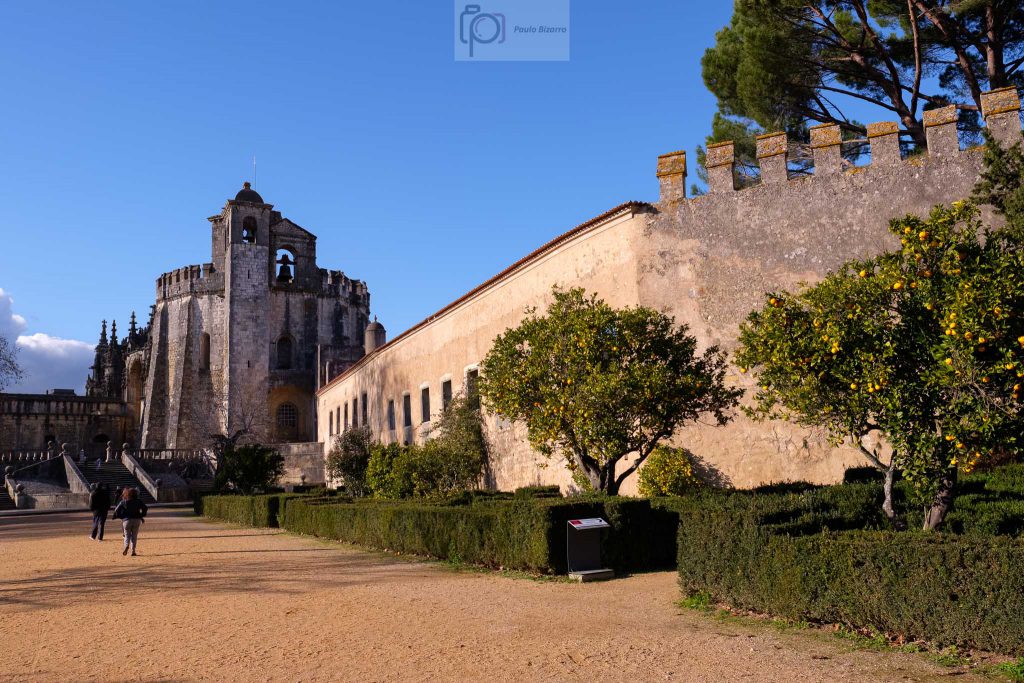
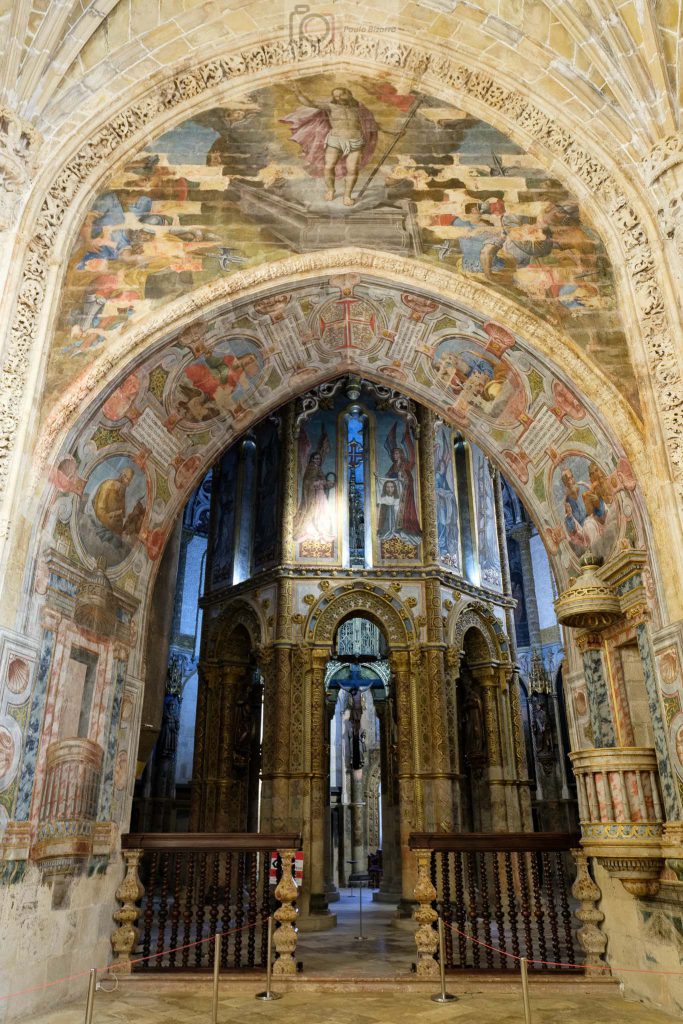
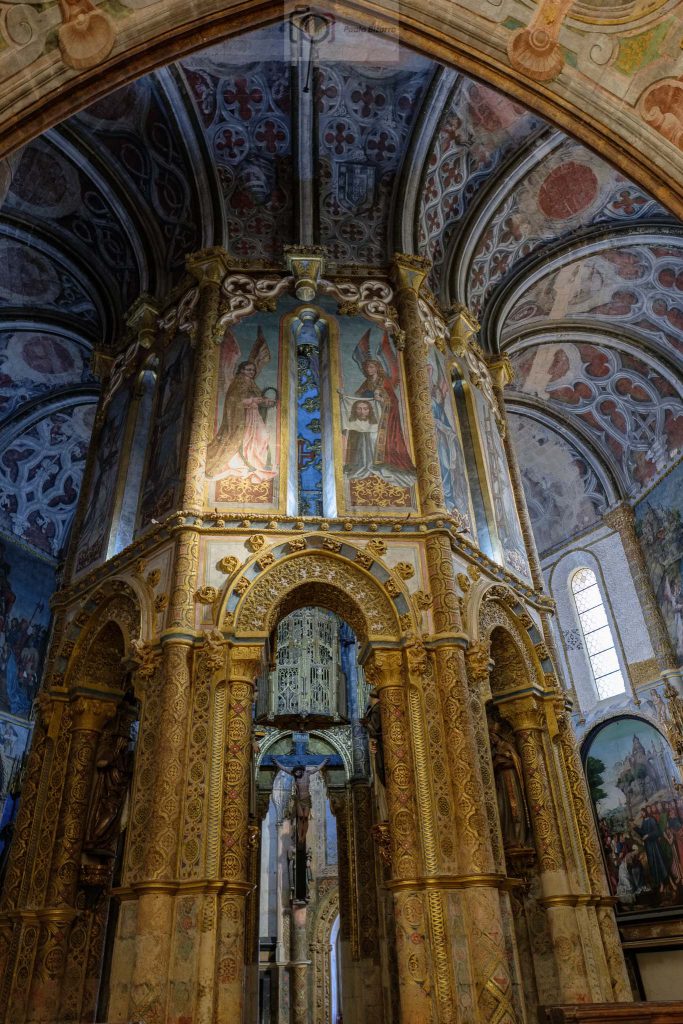
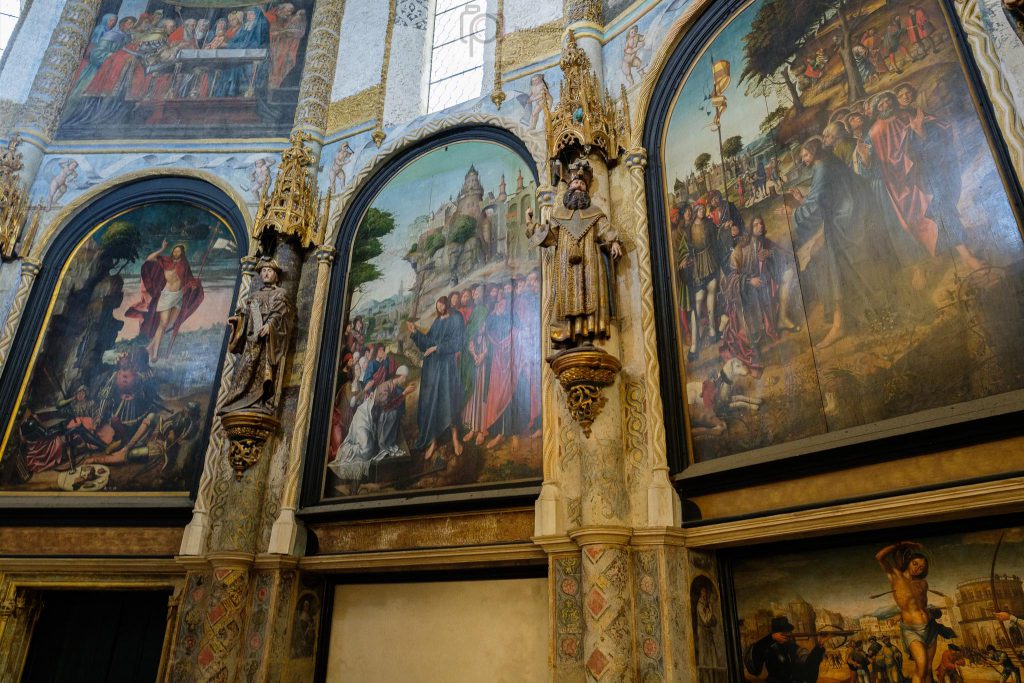
One other important monument is the Manueline church, built between 1510 and 1513. This church was literally erected against the western facade of the Charola, and features one of the highlights of the visit, the famous Manueline Window. The Manueline architectural style appeared during the age of the Portuguese Discoveries, and its name comes from King Manuel I. The window combines various motifs, from religious to maritime ones; it has been described as a “poem written in stone”.
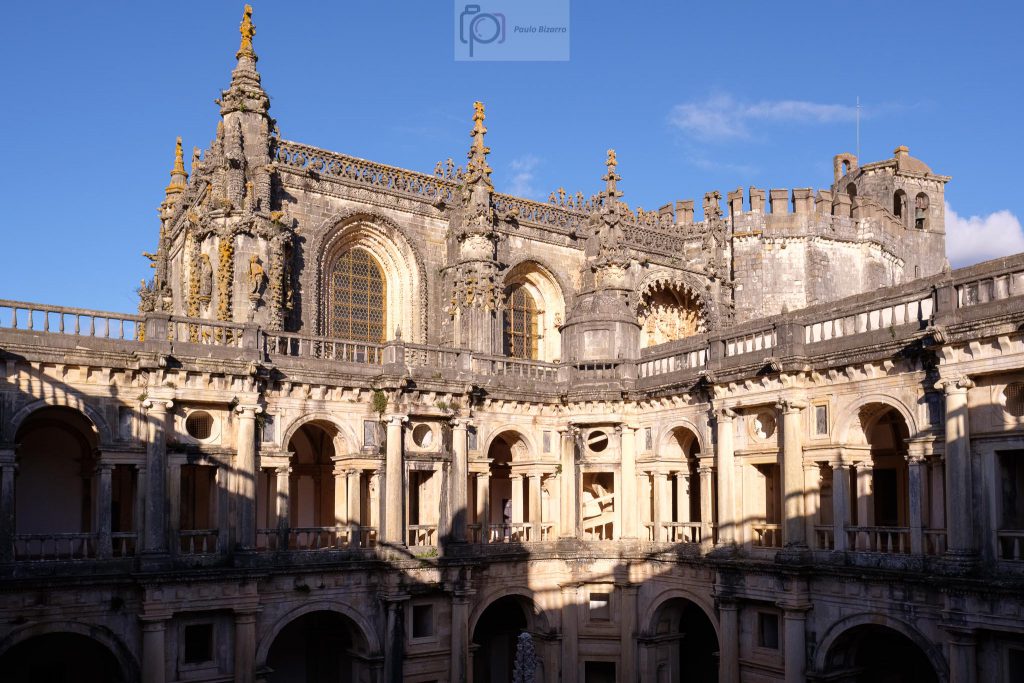
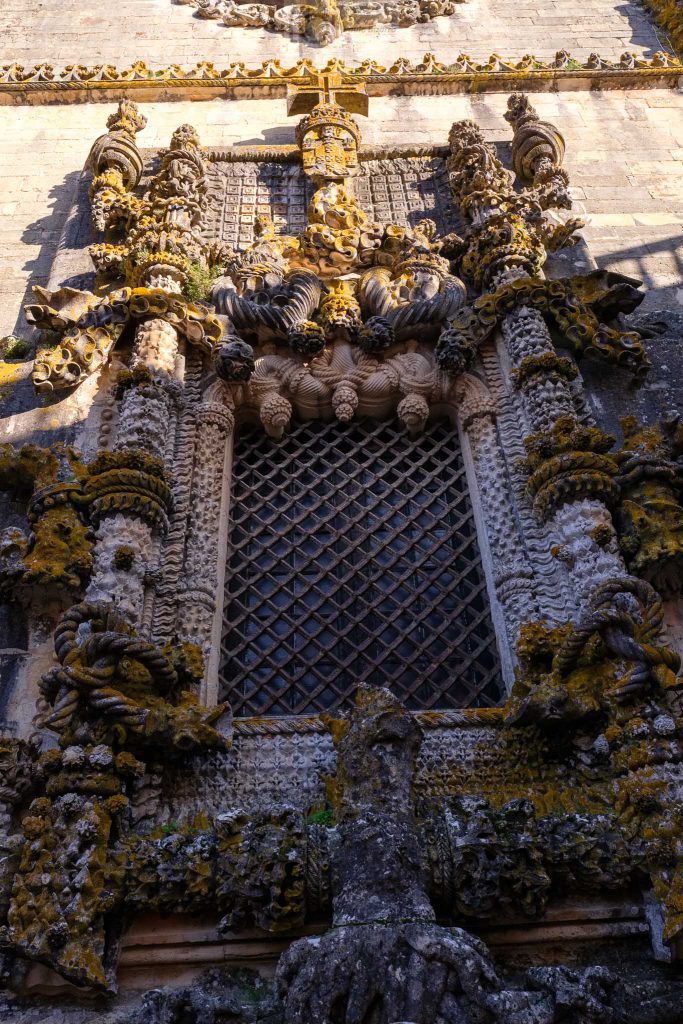
The window is quite impressive in its artistic expression, and I spend some time photographing some of the details.

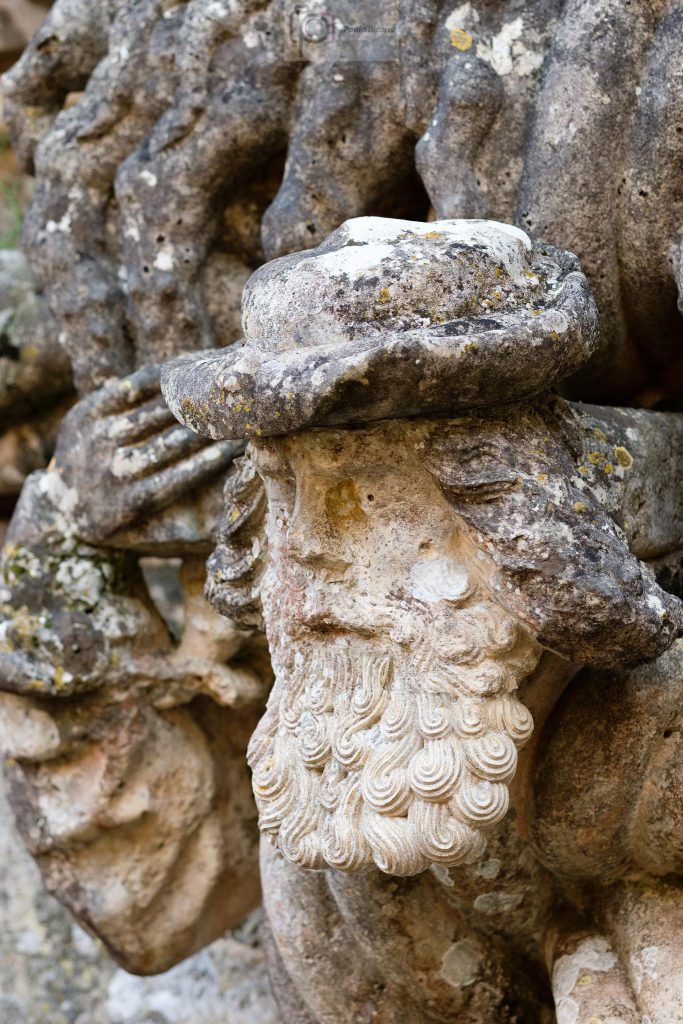

There are many more places and structures to visit in the complex, such as several cloisters and the cistern.
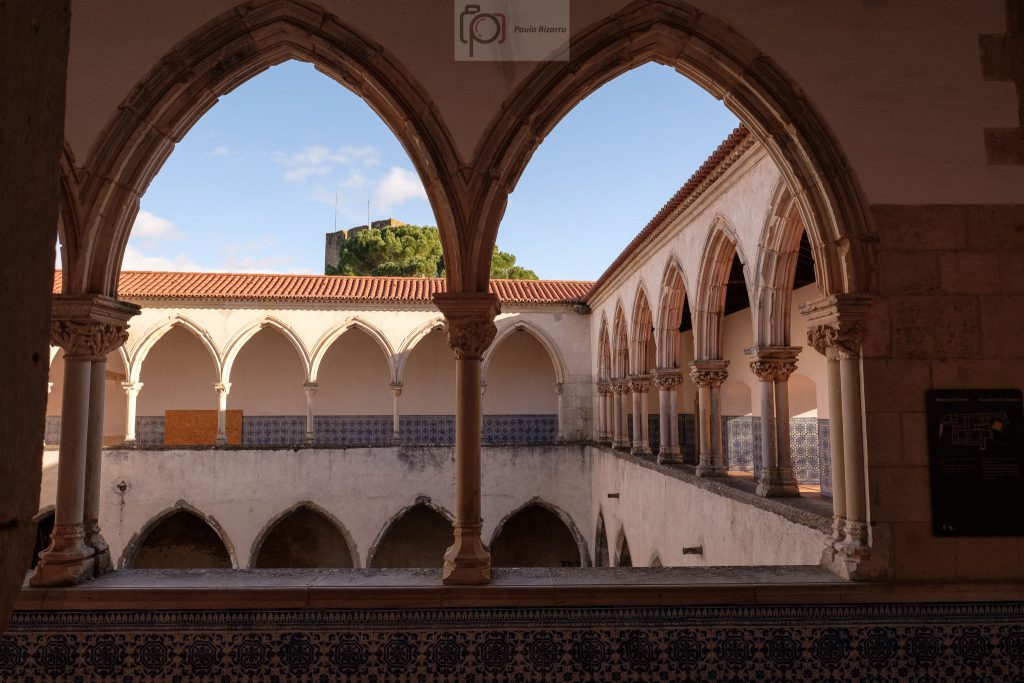

The day had started in Dornes, with a very cold and foggy morning near the river Zêzere, plus a nice walk along a trail. Visiting the Convent of Christ was a great way to finish a very full day in the land of the Templars.